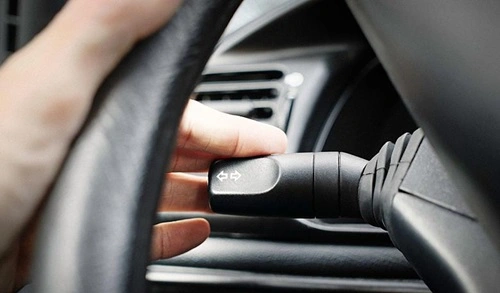Yes, it is generally illegal to not use your turn signal, commonly referred to as a “blinker,” when required by traffic laws in the United States. The rules surrounding turn signal use vary slightly by state, but the purpose of signaling is to ensure road safety by communicating a driver’s intentions to others.
Legal Requirements for Using Turn Signals
- State Traffic Laws
- Most states require drivers to use their turn signals when making turns, changing lanes, or merging into traffic. Failure to signal can lead to fines, points on a driver’s license, or even liability in the event of an accident.
- For example:
- California Vehicle Code Section 22107 mandates signaling before turning or changing lanes.
- Florida Statutes 316.155 require turn signals to be used for at least 100 feet before turning.
- Texas Transportation Code 545.104 states drivers must signal for at least 100 feet before making a turn.
- Signaling in All Situations
- Turn signals are required even when there is no visible traffic, as an approaching vehicle or pedestrian may be in a blind spot or appear unexpectedly.
- Right of Way and Signals
- Using turn signals helps establish right of way in intersections and merges, reducing confusion and preventing accidents.
Penalties for Failing to Use a Blinker
- Fines and Citations
- Fines for failing to use a turn signal range from $25 to $200, depending on the state and the severity of the infraction.
- In some cases, the violation may be treated as a secondary offense, meaning it is cited only if the driver is pulled over for another reason.
- Points on Your Driving Record
- States with a points system may add points for failure to signal, which could eventually lead to license suspension if points accumulate.
- Liability in Accidents
- Failure to use a turn signal can be used as evidence of negligence in a civil lawsuit if an accident occurs. Drivers who fail to signal may be held partially or fully liable for damages.
Why Drivers Often Don’t Signal
- Complacency
- Some drivers believe signaling is unnecessary in low-traffic situations.
- Habit
- Forgetting to signal or failing to develop the habit is a common reason for non-compliance.
- Mechanical Issues
- Malfunctioning turn signals, though rare, can lead to failure to signal. Drivers should use hand signals as an alternative and repair faulty signals promptly.
Safety Implications of Not Using a Blinker
- Increased Accident Risk
- According to a study by the Society of Automotive Engineers (SAE), failure to use turn signals is responsible for approximately 2 million accidents annually in the United States.
- Confusion Among Other Drivers
- Without proper signaling, other drivers cannot anticipate turns or lane changes, leading to sudden braking, collisions, or road rage incidents.
- Pedestrian and Cyclist Safety
- Turn signals are crucial for protecting pedestrians and cyclists, who rely on visual cues to anticipate a vehicle’s movements.
Best Practices for Using Your Blinker
- Signal Early
- Signal at least 100 feet before making a turn or lane change to give others ample time to react.
- Check Blind Spots
- Always check mirrors and blind spots before changing lanes or merging, even when signaling.
- Maintain Equipment
- Ensure your vehicle’s turn signals are functioning properly and use hand signals if necessary until repairs are made.
Related FAQs
Q1. Can I get pulled over for not using a turn signal?
Ans: Yes, failing to use a turn signal is a traffic violation in most states, and law enforcement can pull you over for this offense.
Q2. Is it necessary to signal if no one is around?
Ans: Yes, most state laws require signaling regardless of visible traffic, as there may be unseen vehicles, pedestrians, or cyclists.
Q3. How far in advance should I signal?
Ans: Generally, signal at least 100 feet before turning or changing lanes. Some states, like California, specify this distance, while others recommend signaling early enough to communicate your intent clearly.
Q4. Can I use hand signals instead of blinkers?
Ans: Yes, hand signals can be used in situations where your turn signals are not functional. However, you should repair faulty turn signals as soon as possible.
Q5. Are there exceptions to using turn signals?
Ans: Turn signals may not be required in certain parking lots or private property, but it’s always safer to use them as a habit.
Conclusion
Failing to use your turn signal, or “blinker,” is generally illegal in the United States and can result in fines, points on your license, or legal liability in accidents. Signaling is a simple yet critical action to ensure the safety of all road users. By adhering to traffic laws and signaling consistently, drivers can reduce accidents and maintain road safety.


